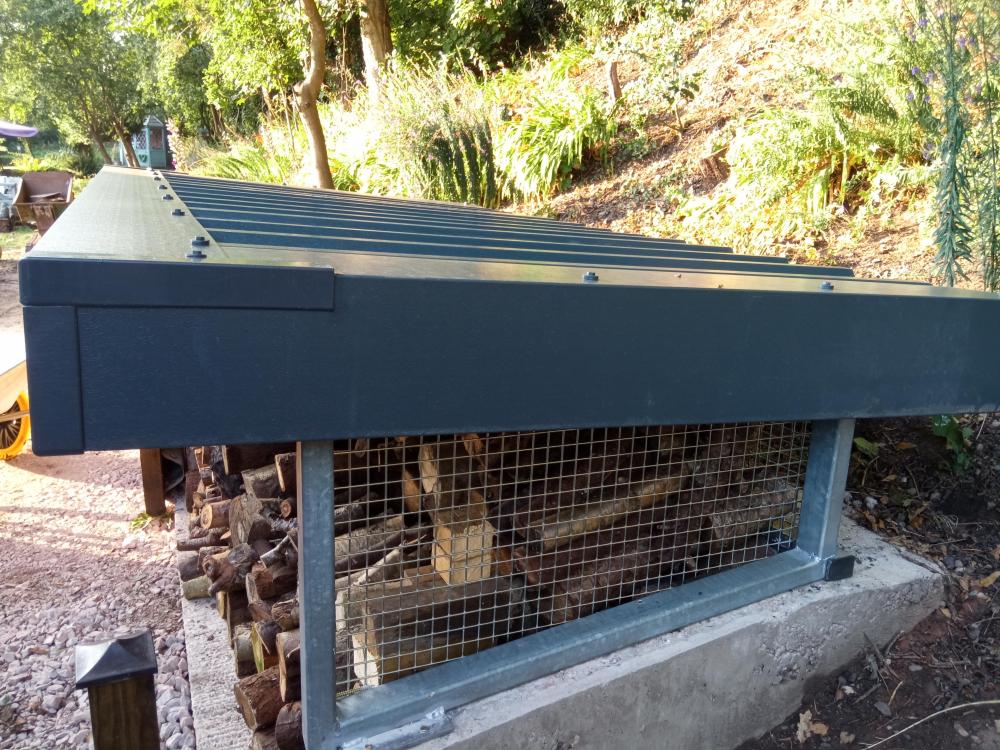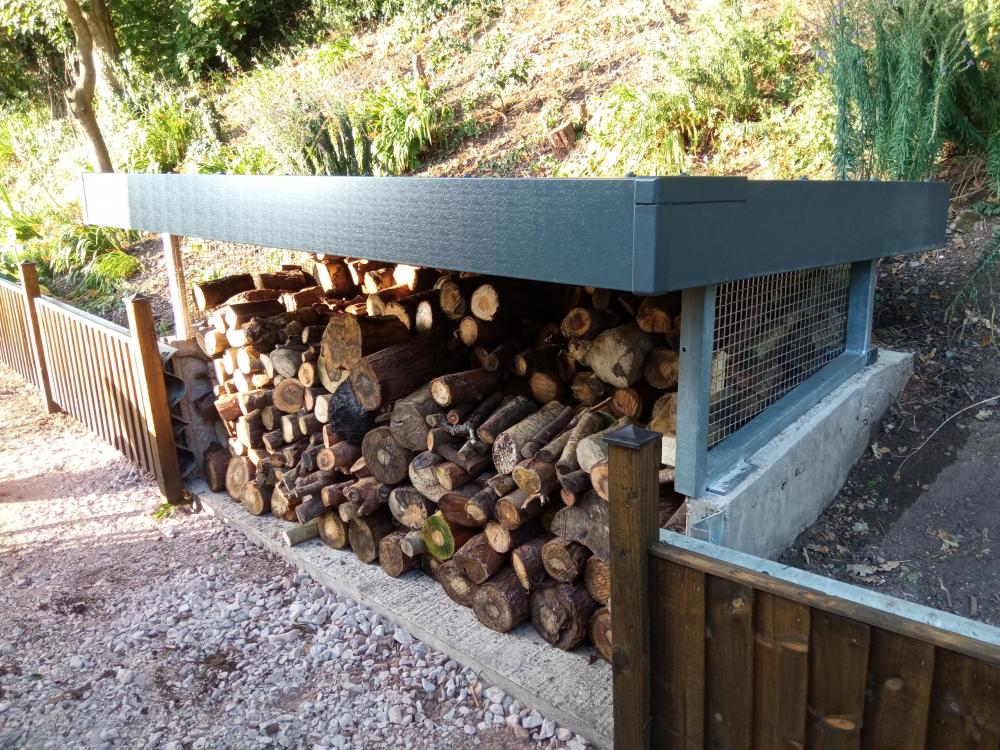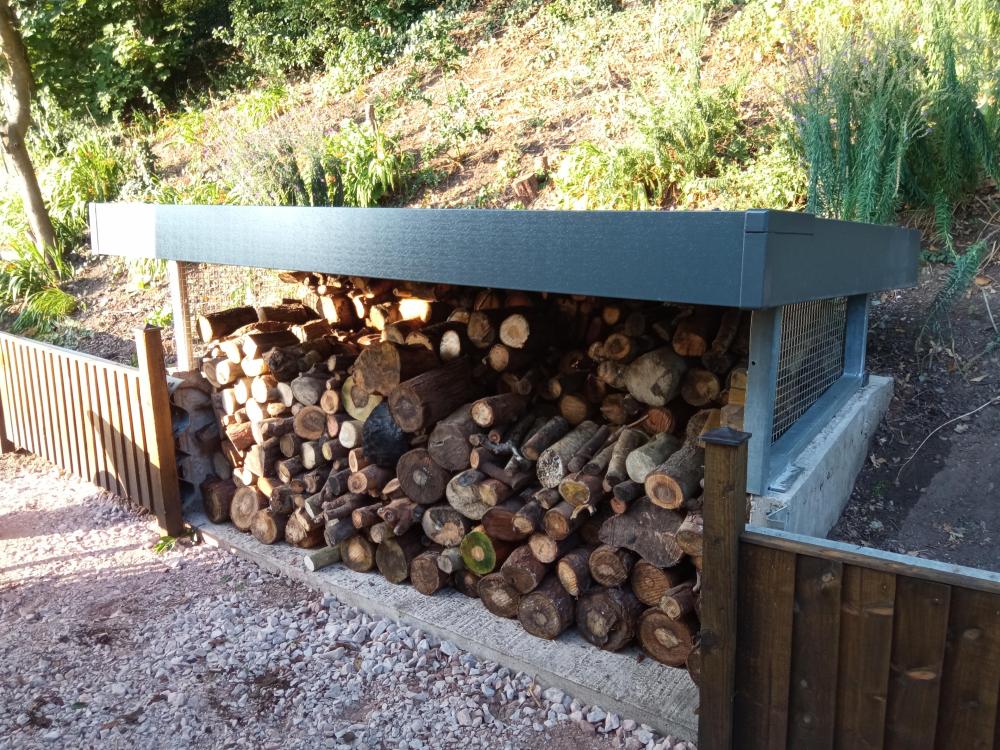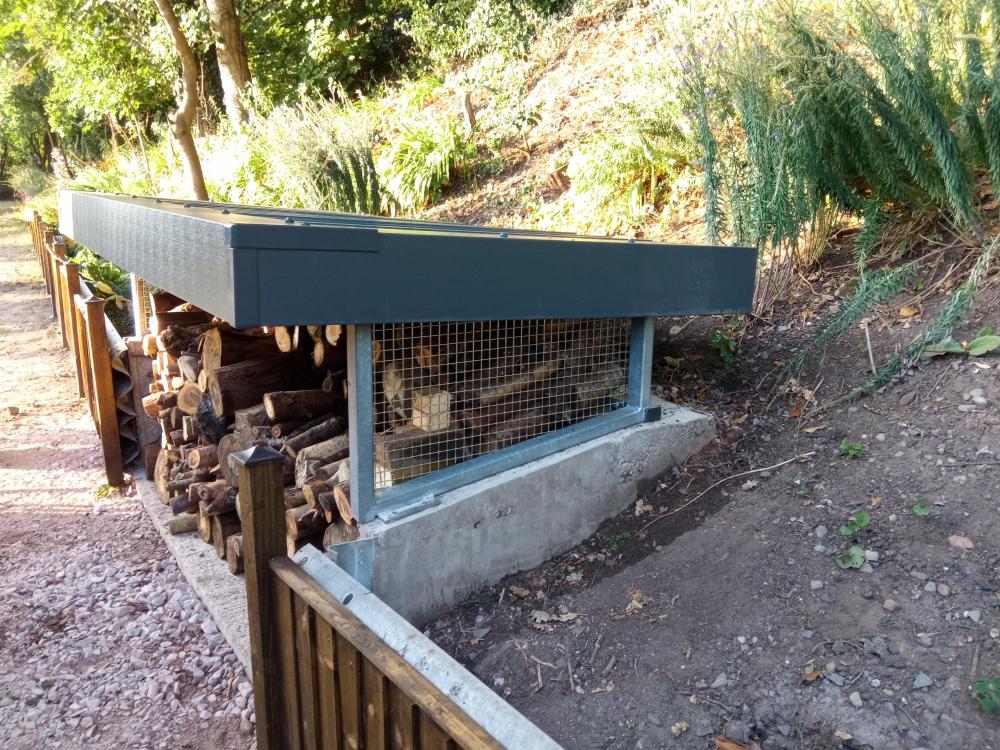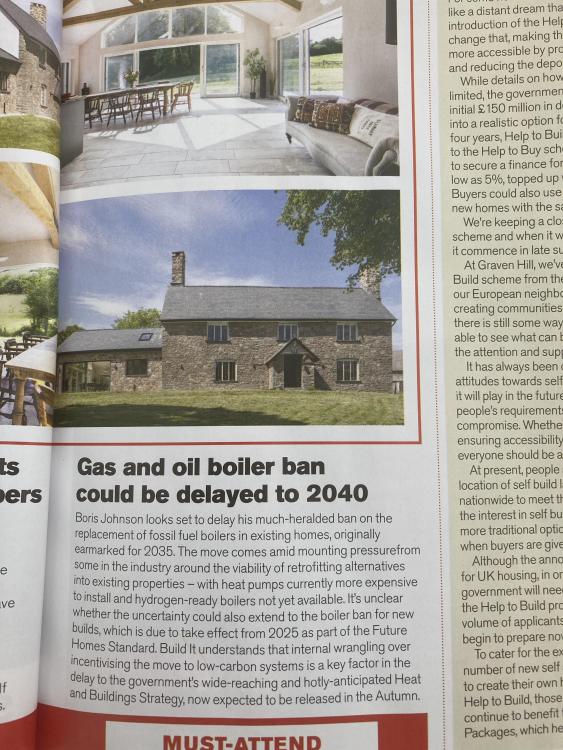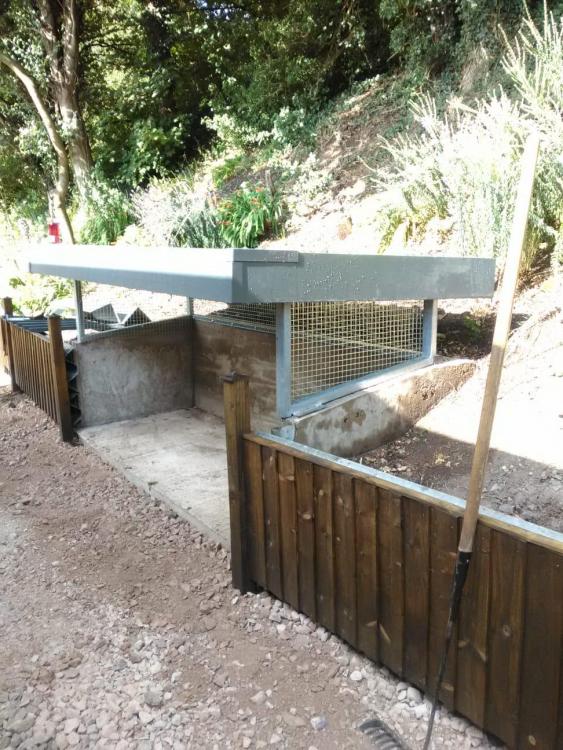Leaderboard
Popular Content
Showing content with the highest reputation on 08/28/21 in all areas
-
There's a chimney on my house plans, nay fooking chance that's getting built. If someone whinges I'll deal with it then.2 points
-
2 points
-
1 point
-
1 point
-
I won’t show you mine (wood store that is ?) made from old pallets and left over roofing from my garage (and it’s hid round the back so you can’t see it ).1 point
-
We said exactly the same thing. The chickens quite liked it too so potential chicken coop if we run out of wood.1 point
-
It is the basis for pozzolans which create seriously strong concrete - it creates a secondary reaction with Portland cement and calcium silicates.1 point
-
Are you sure it’s sand? Looks more like Demarera sugar. looks too course for ordinary (red) mortar sand, maybe a local sharp sand so should be perfect for concrete or screed1 point
-
of course its being kicked into the long grass. There isn't an alternative available for same cost that wouldn't involve freezing to death the poor.1 point
-
I think that a tax on gas and heating oil could be used to persuade people, but you may need to subsidise electric with the proceeds.1 point
-
I don't like the idea of the government banning anything anyway, Its no way to achieve anything. Why don't they make the preferred alternatives the preferable option through correct investment and proper incentives, those that are converted in this manner are alot more likely to embrace the whole eco friendly ethos to their whole build than someone who feels they have been cheated out of their preferred heating option by a government deadline.1 point
-
Yep, there isn't enough knowledge out there in the industry. My electricians had never worked on a house that had an ashp and had to be spoon fed the electric requirements. 2030 would seem a more realistic target.1 point
-
It much more than annoys me - I may start a public campaign against it. It is an unfair stealth tax that few people except commercial developers even know about. In Scotland (and probably the other nations also) If they discover something they like the look of and want to document, record and/or take away there is no cap or limit on the costs you are liable for, whether you have £5 to your name or £50m. Any artifacts found do not belong to you. The only slight saving grace is that the archaeologist cannot instruct the digger to dig beyond what is required to complete your works. They can only tell them to stop, apart from if human remains are found and then police are called and it all changes. The Argyll & Bute pre-application process (designed to save you wasting your and their time on a full planning application) is designed to prevent unwanted surprises by warning of issues that might arise. The paperwork even mentions archaeology specifically as one of the possible issues. But then the smallprint says the council has no liability and you have zero come-back if something gets missed in their report. This enables an archaeology order to be placed on your project later and without warning and as a condition of your full planning permission if the local council archaeologist decides on it based on other data in the vicinity. The reason for the surprise ambush is presumably to try and stop developers burying or destroying archaeology on the quiet in advance. This based on personal experience. I was lucky (most people are) to get sign-off on site in a day with nothing found and an archaeologist's bill of £1000, of which £134 was a fee to the council archaeology department.1 point
-
Yes. (IMO). I think most of the new water based treatments are crap, can’t beat good old fashioned creosote (if it doesn’t kill you first ?).1 point
-
Bed and cover, use as you would normal dust / gravel for pipe trench fill. The public surface water sewer that was installed alongside our founds was done exactly that way. Bed of lean mix ontop of our loose stone backfil, and pipe was covered in more. Remaining levels brought up with loose stone.1 point
-
Good morning, if you were poring highly stressed concrete or for a polished slab then I would be careful what went in the mix. as you are setting gate posts then it doesn’t matter. During the war they threw anything into concrete to pour tank traps and pill boxes etc. They are still standing and are a bitch to break up. pretty much any stones, pebbles, shingle etc will do nicely for post setting. If they are too big it makes the surface difficult to level off that’s all.1 point
-
1 point
-
Lean mix. Used all the time for this sort of thing. Cheap and easy to work with.1 point
-
For these sorts of permanently on big loads, they are best fed from their own radial circuit with a 16A mcb in the consumer unit, and then you don't need an FCU but a 20A double pole switch instead. As others have said this is common with some makes of FCU.1 point
-
Either blocks or soil to form a bund that will hold the shingle in place1 point
-
FCUs, like 13A plug tops, don't like running continuously at 13A...1 point
-
Surround with pea shingle will be all that is needed long term, test before covering1 point
-
1 point
-
Hello Rob. There are no daft questions, it's daft not to ask in fact. I hope this helps to add to your research knowledge. To add to the great informative comments from other posts I'll touch on the structural side of things. I'll do a bit of general stuff first (tell a story) and then focus a bit on what you have. A bit of background on agricultural buildings... lets go "back to the second world war" Very roughly.. and there are a good few bits missing from the following but I've written this to take you hopefully on the "Build Hub Journey" When this war started the steel industry were a bit more advanced in the quality of the material they were producing. They went to Churchill (well not him really but it sounds good) and said.. look we need steel for the war effort. We have moved on from making steel in our back garden and now have "quality control" so our steel is more reliable and less varaible in quality. As it is less variable allow us to reduce the factors of safety we need to apply. This way we will use less steel for building domestic structures and there will be more available for making tanks etc. I will stand corrected but the Gov said OK. Now the concrete folk said...hang on that's not fair as we are all at war.. let us too reduce our safety factors..but they were still making concrete in their "back garden". In essence in a war situation Chuchhill said OK although there was no rational safety basis for doing so. The only basis was that we were in a war.. frankly, if we had lost it we would have much more to worry about than safety factors of concrete and steel design. Moving on..Rationing was still in place after the war and for a while folk still had ration cards, eating powdered eggs and so on. Folk wanted to see some improvement.. There was a push to mechanise farms, improve production. farmers made hay. Barns were needed to house grains and live stock. No one gave two hoots about the quality of the barn stuctures as the populase were restless and demanded a higher standard of diet. The demand was immediate not least politically. Over the next few decades the insurance industry clocked that they were having to shell out for barns say that were say "falling down" too often. Maybe they woke up to the fact that farmers are quite canny, were stuffing them and "having a laugh".. One part of the solution was to start to bring agicultural barns into the "building regs" They started to codify the design. One other driver for this was also that a lot of kids / young men were getting killed on farms back then. It was what we would call today "carnage" What then happened to some extent was that the farmers went "mental" and said if you impose these regs on us the food price is going to go up. I think a compromise was reached where the farmers got a half way house and this manifests today in the modern agicultural code BS 5502 part 22.BS EN 5502. A key thing about this code is that agricultural building design is based on lower loadings, a lower what we call "occupancy rate" , and have no proscribed deflection limits..the amount it sways / deflection. Deflection is critical if you want to use the same frame for a house. It may not fall down but it will move so much that it will burst your cladding fixings and the place will leak like a sieve. Have a look at modern cladding systems, they all have caveats on deflection. If that is not enough then go back to the loadings and occupancy rates.. they are often not compatible with the regs for modern housing roof loads and so on. As an aside jump now to 1980's. Here (and it still happens from time to time) we were getting a lot of "fake sections" from Asia. They are hard to spot, they look like a BS standard sections.. put a micrometer on the flanges and they are thin! Also they had a lot of impurities in the steel which compromises the welding. They are a "shoogly peg" to hang your new house off. Rob and for all. In reality nine times out of ten you''ll find that the frames are of no use structurally. If you want to delve down an SE will want to look at the base connections, have to make safe assumptions on the quality of the steel / oak frame / timber / concrete degredation / the size of the founds. Then the SE has to look at whether they can sign off on the fact that what you have will last for another 50 years which is often a lender requirement. Also remember that in the case of timbers when you alter the ground level, moisture content and let in air you can promote decay in timbers. timbers buiried in the ground will last for hundreds if not thousands of years.. look at some of the old oak piles etc found in the Thames.. all good until you let the air get at them. To sum up. I would start out by investigating the ins and out's. It's a pity that the planners in some cases insist on the retention of a building frame that has no historic value and is no longer serviceable. They fail to recognise that by trying to retain a frame that has outlived it's service life is actually bad for the environment, can prevent young folk getting on the housing ladder and so on. Rob. Lastly you have a fair mix of frames and different constructions. If you want post some photos of the concrete clad frames.. would be interested to see what you have to work with. Oh and if you are converting an old barn there were just as many chancers cutting corners in the past as there are now so proceed with that in mind.1 point
-
I've found HikVision to be reliable, and very easy to set up. I have the DS-7716NI-K4 NVR, which is 4 years old now so may well have been replaced, and a range of 4Mb to 8Mb cameras. The 7700 Series NVR has space for 4 internal HDD. I think the 7600 is similar functionality, but only space for 2 HDD. It has an integral PoE Switch that makes the camera setup very plug-n-play. If you have any cameras over 100m from the NVR then you need a PoE Switch local to the camera. There's lots of options for viewing the cameras live and recorded, either directly off the NVR with an attached screen, from PC/laptop via a web browser or phone/tablet via a few different Apps. There's probably too much choice in HikVision cameras, until you start to tune in on their model numbers and what it means. Definitely worth doing a plan view drawing of the property and work out where to best place the cameras, and what focal length lens is best for each position. Get the right camera for each location, even if that means waiting because something is not in stock. I feel the IR distance is a bit optimistic, I suggest always going for the next up for what you think you need, ie go for the 80m if you want 50m of illumination and 50m if you want 30m. Don't expect too much out of movement detection from the outside cameras, shadows from clouds and leaves will constantly give false positives. Much better to put PIRs nearby and use the alarm function on the NVR to then send you images from certain cameras when the PIR gets pinged. I use the same PIRs for cameras an outside flood lights.1 point
-
Once satisfied that you are really keen, but holding on to your expectations, it would be well worth speaking to a planning consultant. A very local one who specialises in this sort of work, as they will know the policy and the council's interpretation, and also precedents. You would probably need their skills to get permission later. This will have a cost, but is much better than ending up as long term owners of a very expensive barn.1 point
-
That's no distance in the bigger scheme of things, so sewage isn't a real problem that needs too much consideration at this stage. Do you know all the rules? have you spoken to a "professional"? It's the "Agricultural Unit" that has the PD for conversion, so not necessarily the Barns if they've already been sold away from a Farm that is still in business. Or, is the whole "Agricultural Unit" for sale, even if it's no longer functioning as a working Farm? The definitions matter with Class Q. If the barns are still part of a working farm and are yet to be parted from the Farm and sold off, the current owner needs to be part of the Class Q Submission, as it has an impact on the working Farm, ie. any further Agricultural PD (Class B) is removed from the Farm for a period of 10 years. Assuming you can meet all the rules of Class Q, you can then convert to Residential within the envelope of the existing structures. (The open front to the barn you have shown would cause an issue with some LPAs, but not with others). Most LPAs are quite strict on not extending beyond the existing envelope, so the corrugated sheeting defines your outer skin (but can obviously be replaced). This makes it difficult to then get the primary structure of the barn inside the thermal envelope, so you need to keep it outside, and build you walls inside of this structure, and dovetail the old and new to maximise internal floor area, while keeping the existing structure outside the thermal envelope. The barn shown is a very lightweight structure so will likely only have pad foundations. Your going to need some foundation structure to sit under the external walls you need to introduce, so again you'll need a new floor structure that can dovetail around the existing pad foundations and provide the support for the new external walls. All doable, but complicates and adds a little cost. A full planning application for a change of use conversion, may open up better value options where you can extend beyond the existing envelope a little and wrap the existing structure inside the thermal envelope. Edited to add: I can see from your reply, added while I was typing mine, that it appears to be the Agricultural Unit that is for sale, so the next thing to check is that these Barns were last used for Agriculture and haven't had a recent use for fixing cars or storing non-agricultural paraphernalia. Edited again to add: You mention "a few acres". Is the existing owner a farmer, farming the land and possibly renting other land, or a contract Farm worker. Oddly, barns used for contract farming aren't included within Class Q, as agricultural contracting falls outside the Agricultural Unit definition.1 point
-
I hope with regards the neighbours that you don't end up where i have a few times. I have previously done renovations and extensions to property i have owned. I have ended up in the end not wanting to stay in the house due to the soured relationship with neighbours. So when i have finished them, i have ended up just selling them on. It's funny, i am currently looking at a house in what i would call, not a run down area, but a bit old, a bit tired area. If i get it, i recon i can make £50k on the re-sale after refurb. Better still, i recon i will get permission to put an extra house to the side. If i did, it's another £100k + in the bank. The area just has normal people, the type who might do there own car servicing on the drive, rather than getting the main dealer to collect and service it (If you know what i mean.) I have started to realise in life that the nicest people i meet, are people who are just trying to get by, and get on with life. The most unpleasent people i know are the people with money. I saw a tv programme a few years ago about some really poor street in Southend. Everybody were on the breadline. They all looked out for each other, they all kept an eye on each others kids, and if One of them was hungry, somebody in the street would sort them out with a meal. I said to my wife "What a great place to live" They seemed to have values that so many people no longer have.1 point
-
That's Chrisp detailing @lizzie love the drips. What is the finish on the timber?1 point
-
1 point
-
I like his style log store that doubles up as an air raid or earthquake shelter0 points
-
0 points
This leaderboard is set to London/GMT+01:00




